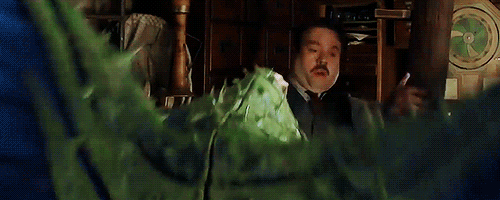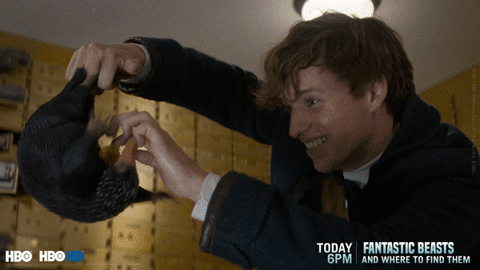Courage, nerve, chivalry, the makings of a true her- oh? This story is about a Hufflepuff? Newt Scamander (played by Eddie Redmayne) is not from Gryffindor, he bears no lightning scar, and he is well beyond the teenage wizard angst of the Harry Potter series. Instead of a Chosen One, our hero is a… Magizoologist. We meet him as he smuggles a briefcase full of magical creatures into New York, before several escape and scatter, leading to an extended game of hide-and-seek. However, Newt also becomes involved in the film’s darker plot. We are introduced to Credence, the adopted son of a magic-hating radical who abuses the children in her care. Credence is an Obscurial: a witch or wizard carrying a parasitical ‘unstable, uncontrollable dark force that busts out and attacks, and then vanishes’. We learn over the course of the film that Grindelwald, a wanted dark wizard impersonating as Mr. Graves, is seeking to make use of this power. At the film’s climax, Newt tries to save Credence, but ostensibly fails.
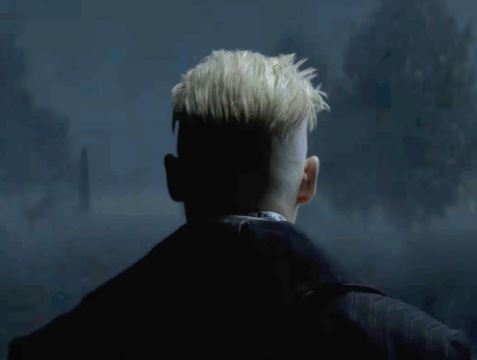
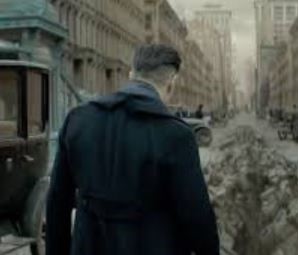
If you’re going to impersonate someone, at least consider going to a different barber’s for goodness sake.
Fantastic Beasts continues the action and adventure themes of the Harry Potter series, but centralises themes beyond simply good versus evil. Our protagonist spends the majority of the film protecting various animals not necessarily against evil, but against ignorance. The American government, MACUSA, have criminalised the trafficking of magical animals: over the course of the film, magical creatures are used as scapegoats for human dangers and crimes. Newt explicitly states his opinion that humans are the ‘most vicious creatures on the planet’ – in doing so, he simultaneously points out that humans are also animals. The existence of magic both bridges and complicates the gap humans—or more specifically, wizards—tend to put between themselves and other animals. The creatures in Fantastic Beasts all have distinct personalities, and vary in their intelligence, conscience and appearance. We meet everything from fantasy newborn echidnas with a built-in purse (Nifflers) to goblins who speak and dress like a mafia boss (Gnarlack). The division between human and animal isn’t clear: this is demonstrated through the way in which Newt adapts the way he communicates with different creatures. Fantastic Beasts uses these interactions to explore inter-species and intra-species relations.
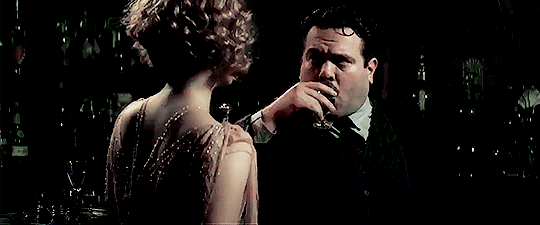
Newt’s fascination of and attachment to magical animals contrasts with his awkwardness around human characters. Where he consistently speaks to and even jokes with his animals, he often seems self-conscious and uncomfortable communicating with humans. He struggles to make eye-contact, and openly confesses to Jacob that he ‘annoys people’. Throughout Fantastic Beasts, different creatures vary in their traits and abilities, both magical and mundane. Communication is a significant aspect of this. Some creatures are able to speak in the same language as humans, such as goblins and house elves, while others are unable to explicitly communicate with humans. This range of abilities challenges the distinction between ‘human’ and ‘animal’: this ambiguity is epitomised in Gnarlack, a lawbreaking goblin with whom Newt attempts to make a deal. Though we are never informed that he is a goblin, Gnarlack is evidently not human: his short frame, long, hooked nose and pointed ears indicate his species.
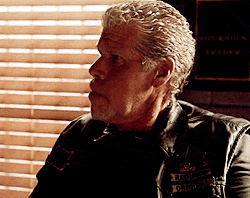
However, his anatomy also sets him apart from other goblins. By digitally altering the shape of his head, Ron Perlman’s magnificent mandible is both retained and emphasised. The ability to identify the human actor through special effects adds another layer of ambiguity to an already complex creature. In looks and behaviour, he is distinctly more humanoid than any of the creatures within Newt’s case – but he is not human. From the Harry Potter series, the audience is aware that goblins are notoriously cunning and can be dangerously underhand. Goblins have their own language (Gobbledigook), but their command of human languages means that they are able to express themselves outside their own species. Despite Gnarlack’s distinctly non-human appearance, Newt adopts the same behaviour he tends to display when interacting with other humans. As they barter, Newt does not maintain eye contact with Gnarlack, instead often looking down at the table or watching the goblin only when he is looking away. The fact that Newt and Gnarlack share a language does not make their communication more straightforward: in fact, it allows Gnarlack to be actively duplicitous.
I hear his chin’s insured for $10,000.
When conversing with animals lacking human methods of communication, Newt pays closer attention to their physicality. When Frank (a Thunderbird) flaps his wings, Newt is able to interpret his movements as agitation, and when communicating with Pickett, he sees the Bowtruckle blow a raspberry at him – to which he replies ‘All right, now that is beneath you’. The moment when Newt gives Pickett over to Gnarlack, he looks away. Bowtruckles in the wild pick a tree as its guardian, and remain there for life, fiercely protective of it. Pickett stubbornly travels around on Newt: it seems that Newt is his guardian tree. When your guardian tree won’t look at you and you have no power of speech, there is little more to do than squeal, jerk, and reach your tiny green arms back towards your home. Newt’s empty hand remains extended as the creature reaches his limbs back towards him, before he uses it to wipe away a tear. He avoids eye contact, not out of awkwardness, but to avoid seeing his friend afraid and upset. The empathy he feels is exhibited most strongly as he causes harm.
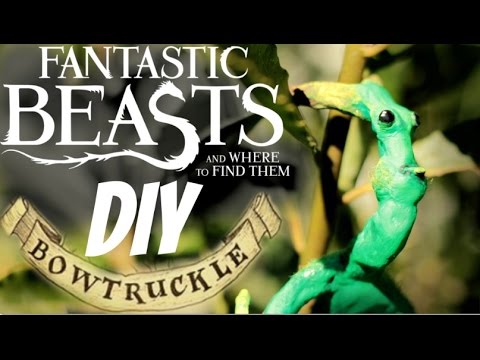
Forced to give up your Bowtruckle to a goblin mobster? Now you can make your own at home – and it won’t have any fears of abandonment!
Fantastic Beasts uses animals to reveal different aspects of Newt’s personality. He is not a typical hero: he is introverted, quiet, sincere and empathetic. He often finds it difficult to interact with other humans. His initial meeting with Jacob juxtaposes the way in which Newt interacts with humans and the animals in his care: his mission to return the Niffler to the case makes him inattentive to Jacob. It is not that Newt does not care about humans: in this scene, he protects Jacob from the armed guards in the bank, and he later provides medical care within his case. Animals are simply higher on his priority list. Newt appears most comfortable with Jacob inside his case, where he has created miniature environments in which the animals in his care can thrive. The case acts as a sanctuary, both for the animals and for himself. We see an immediate change in Newt upon entering the case with Jacob, as he strips off both his outerwear and his discomfort. Redmayne has discussed the link between the costume and the character, regarding the ‘tightness at the top of that coat, Newt’s a compact kind of guy, especially when you think about all the vials and magic he can fit in that coat’.1 Inside the case, Newt has no need for the functionality of his coat, as the space is already optimal for caring for the animals. In casting it off and entering his case, he is more comfortable, both physically and emotionally. The self-confidence he feels in this environment aids in building his relationship with Jacob. After removing his waistcoat, bowtie and braces to chop up some meat, Newt allows the Swooping Evil to fly towards Jacob’s face, before retracting it and smiling to himself – his playful side is revealed just as he is looking most relaxed and boyish. In lots of films, a child is the link between adults and animals. Here, Newt shows a childish charm to him that is evident in the way interacts with animals. The affection that he feels for them is obvious from the beginning, from his look of wonder as the Occamy is born, to his grin as he chastises and tickles the Niffler. He acts as a bridging character between human and animal, wizard and muggle.
It is significant that Newt’s attempt to put Jacob at ease is through an action rather than with words. Where his communication with humans is awkward, his communication with animals is straightforward and heartfelt. Newt does not share a language with the creatures in his case: like an owner telling their dog about their day, we accept that the animals don’t understand every word Newt speaks. He nonetheless provides them with comfort as though they comprehend his meaning as well as his intent, telling his Bowtruckle, Pickett: ‘Right… I think we need to talk. See, I wouldn’t have let him keep you, Pickett’. Given that Newt was only able to retrieve Pickett because Gnarlack double-crossed him, we will never know if this is true. Regardless, Newt cares about Pickett enough to provide him with an explanation and attempt to regain his trust. He also unabashedly refers to himself in the feminine: when greeting the escaped Occamy, he states: ‘Mummy’s here’. The distinction between the terms mother and father may mean nothing to the animals, but Newt does understand them – as do the audience. He not only enacts the traditional role of the mother—to care for, nurture and provide comfort—he embraces it. When he eventually uses this same clear, sincere approach with Jacob, the effect is obvious. The usually eloquent Jacob becomes choked up and reduced to a single ‘Oh’ – not really a word at all. Jacob’s response is as revealing as Newt’s declaration of friendship. Newt displays a care and attentiveness for Jacob which he usually reserves for animals, and in doing so, he evokes an “animalistic” response: a sound, and a display of emotion.
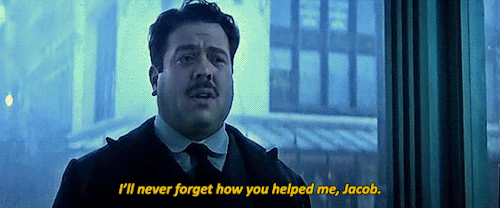
Harry Potter, the Chosen One, the daring Gryffindor with the innate magical ability to speak to snakes, has a conversation with a snake only once. In his childish curiosity and empathy, he asks the snake if he misses his family and then accidentally releases him from his enclosure in the zoo. What a waste. Newt’s ability to communicate with and care for animals is not innate: he is no Dr. Doolittle, no Salazaar Slytherin, not even Harry Potter. He is, after all, a Hufflepuff: the house which values ‘hard work, patience, loyalty, and fair play’.2 It is his attempt to understand them through study, his empathy and attention to their needs which allows him to transcend the boundary between humans and animals. It is not a lack of ability which prevents positive relations between humans and animals, but a lack of knowledge.
Despite his apparent struggles with communication, he is the pivotal link between humans and non-humans. Throughout the film, Newt’s interactions with other humans progress, to the extent that he is prepared to trust others with his case: something which contains his livelihood, his passion and his friends. Newt is not without fault: his knowledge of animals doesn’t prevent him making mistakes. He doesn’t acknowledge Gnarlack’s distinction from humans, and very narrowly misses disaster from this mistake. Despite his distress, he still offers Pickett as a good with which to trade. In doing so, he demonstrates how easily those without a voice can be silenced: he, the character who cares the most about animals in the film, chooses to look away from a creature’s suffering. However, he is also unmistakably, fundamentally, good. He cares deeply for his creatures, and tries to give them the best life he can. Notwithstanding a couple of unfortunate events, he takes their feelings and needs into consideration, and consistently tries to better his understanding of them.
Fantastic Beasts uses the protagonist to explicitly criticize the mistreatment of animals consistently throughout the film. His character arc addresses his comfort in interacting with other humans, rather than animals. However, we see his influence in several characters: Tina, Jacob, even Madam President Seraphina Picquery. Action is not enough: it is through a combination of action and communication that these characters begin to overcome their ignorance and prejudice. Fantastic Beasts repeatedly demonstrates that accepting a state of ignorance can lead to more dangerous outcomes: unnecessary fear, cruelty and discrimination.
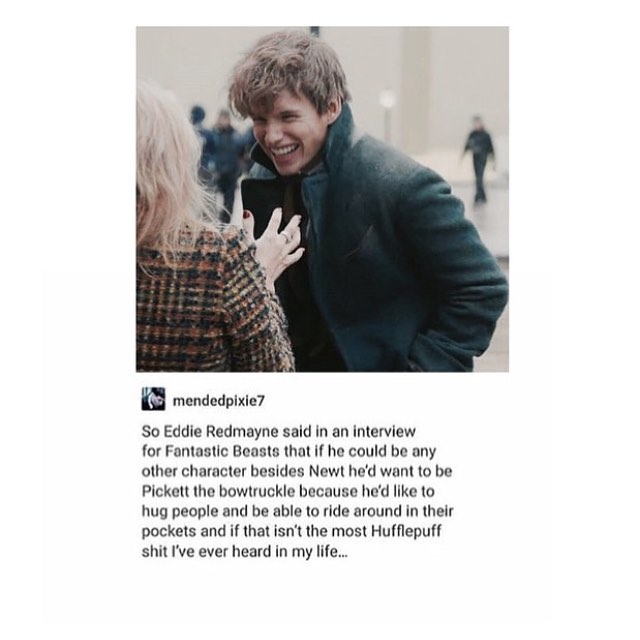
I saved this picture to my computer under the title ‘Eddie Redmayne being adorable’
1) Pottermore, ‘Eddie Redmayne on the coat that made Daniel Radcliffe jealous’, Pottermore, 2015 <https://www.pottermore.com/news/exclusive-eddie-redmayne-interview-on-newt-scamanders-coat>
2) Pottermore, ‘Hogwarts houses: Hufflepuff’, Pottermore, 2018 <https://www.pottermore.com/collection/all-about-hufflepuff>
Further Reading
– Newt Scamander ending fictional toxic masculinity
– The Fantastic Masculinity of Newt Scamander
– https://www.youtube.com/watch?v=C4kuR1gyOeQ
– Eddie Redmayne and Ezra Miller ending non-fictional toxic masculinity.
– Ezra Miller and Eddie Redmayne Compete in a Compliment Battle | Teen Vogue
– https://www.youtube.com/watch?v=RKRqOA-nVq0&t=159s
– In case you want to check any of my rogue statements about animal relations in the Harry Potter universe
– J.K. Rowling, Fantastic Beasts and Where to Find Them – Newt Scamander, (London: Bloomsbury Publishing, 2017)
– To view a real life (sort of) Niffler
– https://www.dailydot.com/parsec/nifflers-real-fantastic-beasts-puggles/
